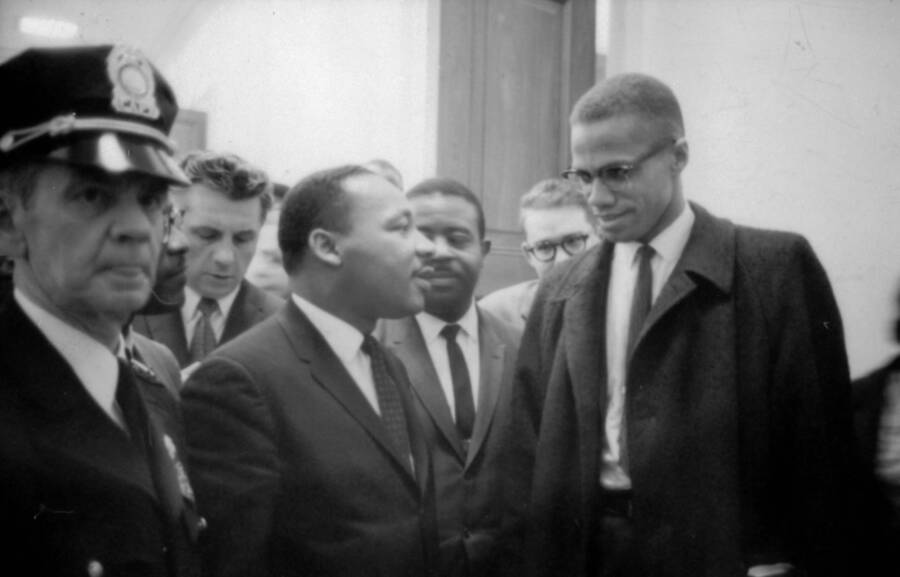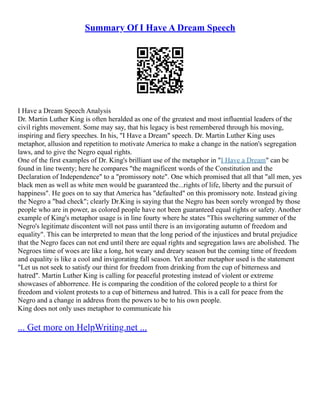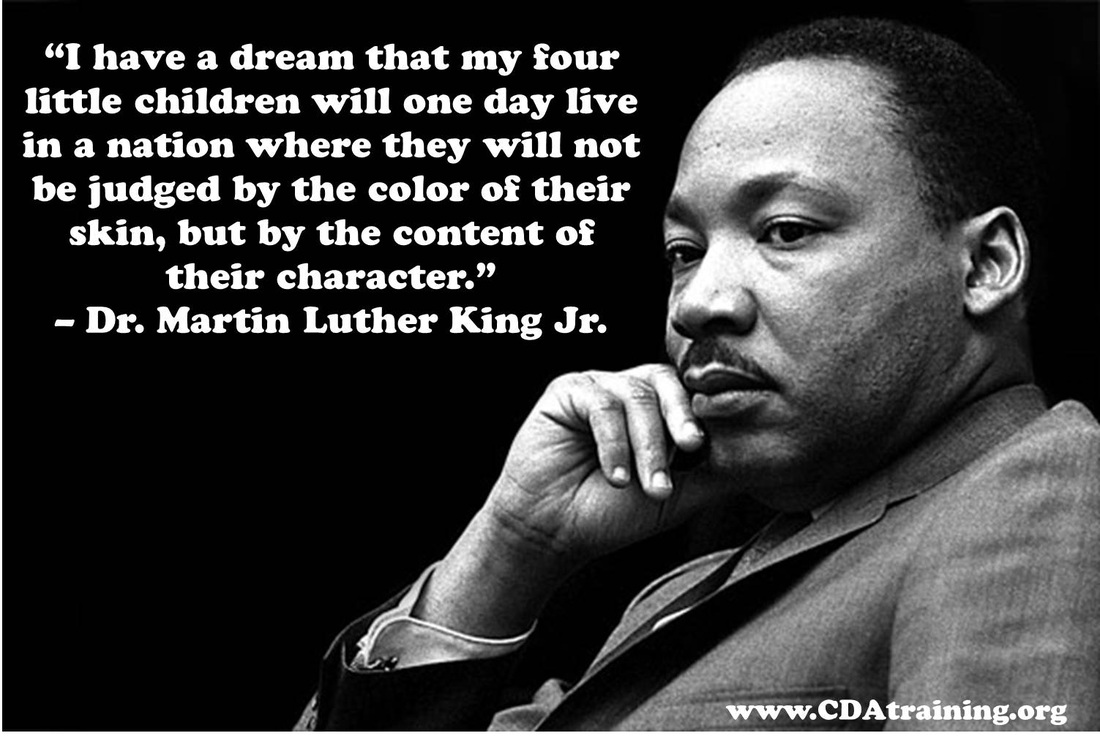Gallery
Photos from events, contest for the best costume, videos from master classes.
 |  |
 |  |
 |  |
 |  |
 |  |
 |  |
Martin Luther King Jr.'s famous "I Have A Dream" speech utilizes numerous persuasive rhetorical techniques, among them parallelism and repetition. One good example of both is towards the end of While the entire speech is well-crafted, King uses parallel structure -- the intentional repetition of grammatical structures -- to organize, connect and emphasize the most important elements. Parallel structure organizes related information. Repetition is key in helping you remember! One of the best examples of this type of persuasive repetition is Martin Luther King Jr.'s, "I Have a Dream Speech," which he delivered on August 28, 1963, and is considered to be the greatest speech in modern times. Repetition in forms like anaphora is quite obvious, but there are more subtle ways to use repetition as well. One way is to repeat key “theme” words throughout the body of your speech. If you count the frequency of words used in King’s “I Have a Dream”, very interesting patterns emerge. Martin Luther King Jr. uses repetition and metaphors in his "I Have a Dream" speech to emphasize key points and create vivid imagery. Repetition reinforces his vision of equality and justice, Rhythmic, lyrical repetition. The speech was not. It took a Martin Luther King to deliver it. Which is why we may never see something like this again. Follow me on LinkedIn. REPETITION PARALLELISM RESTATEMENT MARTIN LUTHER KING, JR’S “I HAVE A DREAM” SPEECH FULL TEXT- SOURCE: EXAMPLE- Martin Luther King, Jr. uses both parallelism and restatement in his speech. Explanation / Interpretation: King uses the phrase “one hundred years later” to Martin Luther King kept repeating "I have a dream" to underscore that his "dream" was aspirational and not reality. He repeats the phrase eight times, creating a chorus to underscore that Martin Luther King used the repetition of “I have a dream” several times in his speech, including these times: I have a dream that one day this nation will rise up and live out the true meaning of its creed: ‘We hold these truths to be self-evident, that all men are created equal.’ Here are five speaking strategies that you can use from King’s famous speeches. Repetition: In his "I Have a Dream" speech, King repeated specific words and phases. He repeated the phrase "I have a dream" to emphasize his vision for a brighter future. Full text to the "I Have A Dream" speech by Dr. Martin Luther King Junior I am happy to join with you today in what will go down in history as the greatest demonstration for freedom in the history of our nation. Five score years ago, a great American, in whose symbolic shadow we stand today, signed the Emancipation Proclamation. Martin Luther King's I Have A Dream speech text and audio . Martin Luther King, Jr. I Have a Dream. delivered 28 August 1963, at the Lincoln Memorial, Washington D.C. In a __ 184 Original Research Article Repetition Values on Martin Luther King Jr. Speech Mas Darul Ihsan previous paragraph of the speech, the dream stated clearly is about the equality, the freedom and of course the togetherness. By saying “with this faith” many times, it was a sign to audiences. Every year we celebrate the anniversary of Martin Luther King, Jr.’s famous I Have a Dream speech. The performance stands as one of the most impressive orations of all time. Filled with allegory and presented with dramatic flair, the message resonates as strongly today as it did over 50 years ago. The “I Have a Dream” speech, delivered by Martin Luther King, Jr. before a crowd of some 250,000 people at the 1963 March on Washington, remains one of the most famous speeches in history. Through this powerful image, Martin Luther King Jr. was able to effectively communicate his message of hope and liberation. Rhetorical Devices Used by Martin Luther King in His Letter. Martin Luther King Jr. uses a variety of rhetorical devices in his “Letter from Birmingham Jail” to emphasize his points and make them more convincing. Civil rights leader Martin Luther King Jr. addresses the crowd at the Lincoln Memorial in Washington, D.C., where he gave his "I Have a Dream" speech on Aug. 28, 1963, as part of the March on The conclusion especially on the ideas of repetition are that Martin Luther King Jr. tries to make sure his audiences about that 1) the repetition is something more that the meaning itself, it is Dr. Martin Luther King Jr. is one of history's most memorable speakers. He is known not just for what he stood for, but also for how he spoke. He used metaphors, repeated phrases, and references to history to make his point clear. These techniques made his speeches powerful and memorable. King's speeches were more than In his famous speech, “I Have a Dream,” Martin Luther King presented his arguments using some of the most compelling figurative language ever employed in a speech. At the outset, King expresses his dream about Abraham Lincoln and the Emancipation Proclamation, portraying it as a beacon of hope for all Negroes to attain equal rights and citizenship in the United States.
Articles and news, personal stories, interviews with experts.
Photos from events, contest for the best costume, videos from master classes.
 |  |
 |  |
 |  |
 |  |
 |  |
 |  |